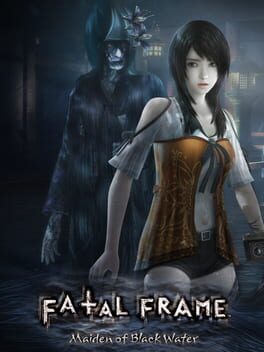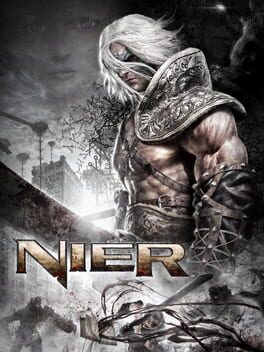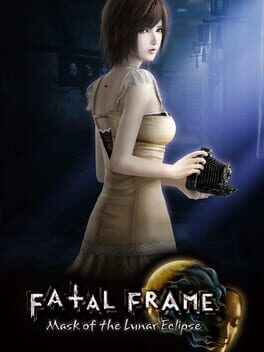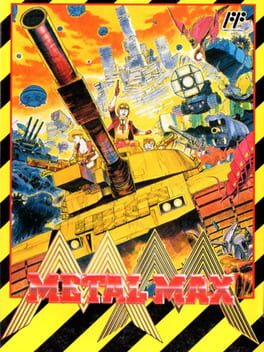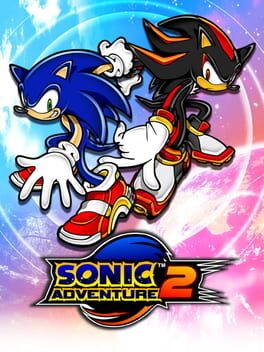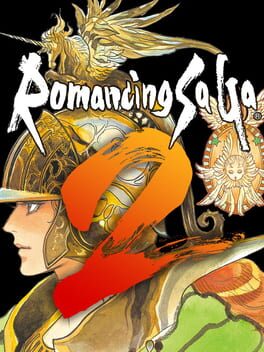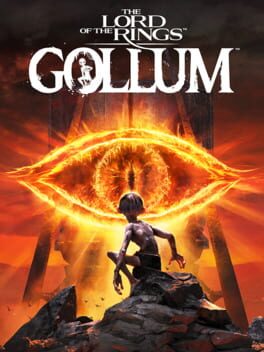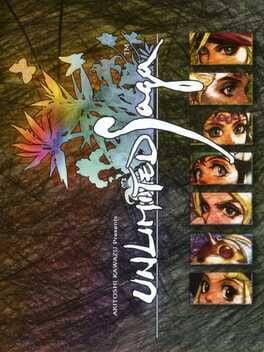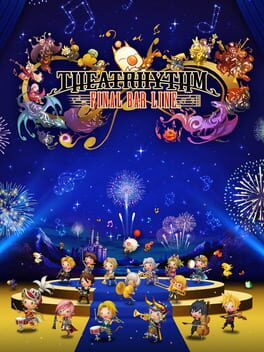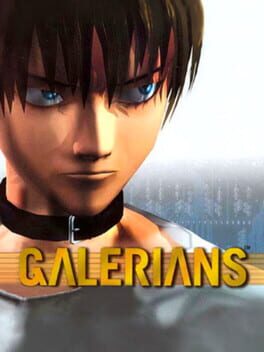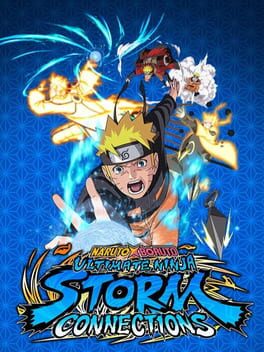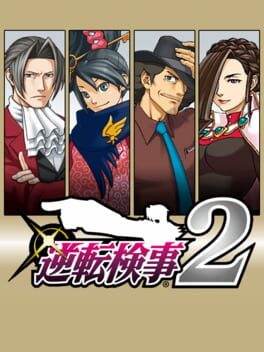YSTMaster
BACKER
165 Reviews liked by YSTMaster
'They sat side by side in forward-facing seats, and her mother settled deep into the seat and fell into a slumber. Nagase tried to look out the window at the night-time landscape along the tracks, but the only thing she could see in the window was her own reflection against the dark background.'
– Kikuko Tsumura, Potosu raimu no fune, 2009 (tr. Kendall Heitzman).
Played with BertKnot, in preparation for my upcoming video essay on the Sumida River and urban watercourses. This game and review evoke situations of suicide, incest and sexual violence in postwar Japan. Reader discretion is advised.
Japanese horror stories have historically been dominated by vengeful spirits (onryō), whose death or tragic circumstances of life cause them to return to haunt the world of the living. Often women, they come to embody the failure of individuals to live up to their moral obligations of respect and altruism (on) to others. The onryō has a special place in this system of obligations, as women are frequently in a subordinate position in the Japanese hierarchy; their revenge is thus associated with an implicit critique of the structural injustice of Japanese society. Female spirits are metaphysical intermediaries between the world of the living and the world of the dead, embodying the faults of the former. It is no coincidence that Japanese horror films have historically been shown during the summer: the Obon festivals, celebrated in August, are considered times when the dead return to family altars to communicate with the living, who must then pay their respects.
Mountains, water and forests: to die among the trees in Japanese fiction
Fatal Frame: Maiden of the Black Water explores common themes in Japanese horror, overlaying them with a Shintō aesthetic in which women are the catalysts for harmony between human civilisation and the natural environment. The player is invited to follow Yuri Kozukata, Ren Hojo and Miu Hinasaki, all three of whom are irresistibly drawn to Mt. Hikami. The site exerts an uncanny attraction, playing on their mental instability. Although Mt. Hikami is a place with traces of urban modernisation, it is best known as a convenient place to commit suicide. The forest in the game is reminiscent of Aokigahara, which is notorious for its high suicide rate. The depiction of Aokigahara is heavily influenced by its description in Seichō Matsumoto's Nami no Tō (1960). Several elements of this detective story have had a major influence on popular culture and beliefs: suicide, steeped in shintō and Buddhist sensibilities, is presented as a positive alternative to real-world suffering [1]. Aokigahara is also described as a place from which no one ever returns.
An epidemiological study of suicide in Aokigahara reveals that people who attempt suicide in this forest do not necessarily do so for religious reasons and are not originally from the region, but admit to wanting to experience a 'pure' death by sharing their last vision with other suicide victims. Remarkably, cases of dissociative amnesia and suicide pacts have also been documented in Aokigahara. For Yoshitomo Takahashi, 'forms of significance attached to suicide in Jukai are symbolic value, imitation, purification of one’s death, reconfirmation of one’s will to commit suicide, sanctuary, the wish to disappear, and the wish to belong' [2]. These socio-cultural phenomena are echoed in Maiden of the Black Water, where the corruption of memory and the desire to rejoin the dead haunt the game's discourse. The more she explores Mt. Hikami, the more vulnerable Yuri becomes to the recollection of her previous suicide attempt, while her ability to see the memories of others builds empathy for those who wish to die on the mountain. Unlike Ren and Miu, who are primarily interested in finding a specific person, Yuri is haunted by the ghosts of a large group of departed souls.
Mt. Hikami's sickly charm is explained by the symbiosis between the ghost of one of the priestesses, whose gaze drives the victim to commit suicide, and the mysterious environment. The dense forest suffocates the player in a gloomy, alienating heat, while the streams, fog and setting sun add to the mystique of the place. A similar depiction can be found in Episode 26 of Mushishi's first season (2005), Kusa o fumu oto, where the mountain is constantly surrounded by fog, the colour of which changes according to the well-being of the region and the Mushi River (kōmyaku) that runs beneath it. Mushishi links the prosperity of the region's inhabitants to the well-being of the mountain; Maiden of Black Water follows suit, making water the symbol of Mt. Hikami's purity. Described as purifying when the rites are properly observed, the water absorbs the memories of its inhabitants and must be constantly cleansed of this corruption (kegare) by women's sacrifices. This cyclicality of human experience – born of water and returning to water – is the primary driving force behind the tragedy, as it is consubstantial with the appearance of curses.
Making and unmaking of the body on Mt. Hikami
Much of postwar Japanese horror is directly concerned with the notion of the body (nikutai) [3], and Maiden of the Black Water instantiates this aspect in a number of ways. The characters' bodies can get wet, making them more vulnerable to ghosts and supernatural phenomena. The rain thus acts as a constant reminder of the corporeality of the protagonists, who cannot escape the contingencies of physical existence. Moreover, Maiden of the Black Water does not hesitate to break and twist bodies in particularly violent ways. The boxes in which the women are placed force them to bend their limbs into uncomfortable positions, as illustrated by the erratic movements of their ghostly forms. The various spirits are disturbingly animated, both in their disquieting immobility and in their sudden motions.
The title manages to convey the circumstances of their death and their regrets through their movement. Each encounter with a ghost instantiates their physical death, contributing to a real sense of malaise. The more action-oriented gameplay of Maiden of the Black Water contributes to this newfound nervousness. The title requires the player to be more mobile and constantly think about the camera angle – with the WiiU version forcing them to move the Gamepad. The horror is no longer so much in the viciousness of the encounters, made easier by the introduction of weak spots and the fact that photographs taken during a Fatal Frame do not consume film, but rather in the depiction of the spirits themselves, which are much more vengeful and aggressive.
Maiden of the Black Water also succeeds in its first half in striking an elegant balance between the introduction of new environments and their repetition. Mt. Hikami uses all the grammar of Japanese gothic horror while blending it with the disturbing grime of urbanisation. The cable car that leads in and out of the forest is used to enclose the horror, suggesting that spiritual experiences can only take place on the mountain. The title, however, subverts this idea by emphasising the physical suffering of the characters, beyond mere nightmares. Even outside Mt. Hikami, the protagonists' bodies are failing, abused by nightmares or numbed by suicidal thoughts. In a way, Maiden of the Black Water is a reminder that the trauma suffered by women leaves indelible marks. Several characters suffer the consequences of sexual violence, while Rui is constantly torn by the weight of gender and social pressures.
New masculinities, femininities and motherhoods in Shinzo Abe's Japan
Ren's representation of ideal Japanese masculinity makes him a disturbing presence: the sections in which he has to defend the shop from ghostly attacks are particularly effective. The appearance of the spirits outside the mountain decisively shatters the idea of a curse confined to Mt. Hikami, while Ren's visits to the rooms where the various teenage girls sleep are bound to cause acute concern. Ren is never voyeuristic, but he serves as a unsettling male avatar, demonstrating that women can never let their guard down around men. Ren highlights both the breakdown of masculinity and the growing social problems in 2010s Japan.
Contemporary Japanese horror is characterised by the dissolution of traditional solidarities in the face of rapid urbanisation. Ada Lovelace argues that recent decades have seen a shift in the representation of the onryō, whose figure is no longer necessarily linked to issues of revenge for violated social norms. The weight of globalisation and Western influences is said to have deconstructed the traditional female monstrosity: 'ghostliness is no longer the figure of anxiety; whether it is the self destructive longing for the abject maternal, or masochistic fetishes for a Westernized woman, women who are not confined to gendered discourse, who are thus monstrous, become the figure of desire' [4]. It seems to me that Maiden of the Black Water mitigates this hypothesis by offering a third neo-traditionalist path.
The suicide pacts of the high school girls, the implication of sexual violence and the incestuous relationships evoke the limits of the social contract in Japanese culture, where the expectations placed on girls are unbearable. The paranormal is precisely one way of highlighting this oppression: the fate of the priestesses illustrates an insupportable philosophy of sacrifice in contemporary Japan – through Shintō rituals – but also the betrayal of the concept of family, as the men fail to live up to the promise they made to the priestesses. The role of Kunihiko Asō and the various men portrayed is particularly telling, as they are both the main causes of the curses of Mt. Hikari, and the people the game chooses to repudiate in its final scenes.
Ikiru
What sets Maiden of the Black Water apart from the other games in the series is its focus on motherhood, guilt and the desire to make amends. Unlike previous titles, the relationship between daughters and mothers – biological or otherwise – is infused with genuine hope. The violence suffered in the past is acknowledged as part of their identity, but the focus is firmly on the future. In the light of the social changes of the 2010s and the new motherhood theorised by Shinzo Abe, the game seems determined to reject the eternal tragedy of the female condition and propose the rebuilding of a family, softening the weight of blood and accepting that a family is not necessarily biological [5]. Maiden of the Black Water reappropriates traditional notions of on to create a new vision of Japanese society with a more peaceful relationship between daughters and mothers. This new representation of motherhood can also be found in recent crime and horror fiction: Paranormasight (2023) is a topical example of this renewed discourse.
The noticeable change in the game's discourse compared to the previous Fatal Frame games gives the series a sense of closure. While it is unclear whether a future project is planned, the absence of a new game for almost ten years supports the idea that Makoto Shibata no longer sees its relevance. It is possible that Maiden of the Black Water was an unintentional way of exorcising the nightmares that plagued his nights and were the source of the various Fatal Frame games. Steeped in the traditionalist aesthetic of Japanese gothic horror, Shibata may have wanted to put an end to the voyeuristic male gaze of female tragedy. This latest title brings to a close the storylines of the series' core characters – Miku Hinasaki finds an answer to her relationship with the world of the living, while Asō is ultimately presented as the cause of all the misfortunes, though he never understood it, being so fixated on himself.
In this newly imagined future, a new Fatal Frame is perhaps unnecessary, as the answers are left to Japanese society itself, whose challenge is to adapt to a modern world and its issues. Maiden of the Black Water is far from a perfect title; less overtly horrific than the first three titles, some chapters suffer from a certain slowness and excessive ghost encounters, while some narrative threads are abandoned too early as the title tries to evoke too many different themes. Nevertheless, the game is carried by a constant flame that begs not to let go of life and not to surrender one's individuality to the pessimism of traditional rituals. Yuri's last tears are filled with sincere empathy; Shibata's voice, mixed with those of Asō and Ren, disappears in favour of an optimistic sisterhood. After thirteen years of suffering, this is perhaps the best way to end Fatal Frame.
__________
[1] Roxanne Russell, 'Views of suicide in modern Japanese literature: a positive portrayal in Nami No Tou', in Southeast Review of Asian Studies, vol. 28, 2006, pp. 199-201.
[2] Yoshimoto Takahashi, 'Aokigahara-jukai: Suicide and Amnesia in Mt. Fuji’s Black Forest', in Suicide and Life-Threatening Behavior, vol. 18, no. 2, 1988, pp. 174.
[3] This centrality of the body can be explained by a number of factors. In particular, the atomic bombs are seen as a direct attack on the idealised body (kokutai) of the Japanese nation, while the American occupation has been compared to the sexual violence suffered by prostitutes. On corporeality in Japanese art, see, for example, Fusako Innami, 'The Flesh, Subject, Embodiment in Postwar Japan: Through Nikutai and Gutai', in Gérard Siary, Toshio Takemoto, Victor Vuilleumier, Yinde Zhang (ed.), Le corps dans les littératures modernes d’Asie orientale : discours, représentation, intermédialité, Collège de France, Paris, 2022 ; Ayako Saito, 'Occupation and Memory: The Representation of Woman's Body in Postwar Japanese Cinema', in Daisuke Miyao (ed.), The Oxford Handbook of Japanese Cinema, Oxford University Press, Oxford, 2014, pp. 327-362.
[4] Ada Lovelace, 'Ghostly and Monstrous Manifestations of Women: Edo to Contemporary', in The Irish Journal of Gothic and Horror Studies, vol. 5, 2008, p. 41.
[5] The game is neo-traditionalist in that it promotes a familial ideal in line with Japan's new political agenda; it should be contrasted with feminist authors such as Sayaka Murata, whose work is characterised by a radical rejection of the traditional family and a defence of asexuality. Although Chikyū seijin (2018) makes no value judgements, it describes the complete dissolution of interpersonal relationships to the point of total social isolation, a sign of the tragedy of women's condition.
– Kikuko Tsumura, Potosu raimu no fune, 2009 (tr. Kendall Heitzman).
Played with BertKnot, in preparation for my upcoming video essay on the Sumida River and urban watercourses. This game and review evoke situations of suicide, incest and sexual violence in postwar Japan. Reader discretion is advised.
Japanese horror stories have historically been dominated by vengeful spirits (onryō), whose death or tragic circumstances of life cause them to return to haunt the world of the living. Often women, they come to embody the failure of individuals to live up to their moral obligations of respect and altruism (on) to others. The onryō has a special place in this system of obligations, as women are frequently in a subordinate position in the Japanese hierarchy; their revenge is thus associated with an implicit critique of the structural injustice of Japanese society. Female spirits are metaphysical intermediaries between the world of the living and the world of the dead, embodying the faults of the former. It is no coincidence that Japanese horror films have historically been shown during the summer: the Obon festivals, celebrated in August, are considered times when the dead return to family altars to communicate with the living, who must then pay their respects.
Mountains, water and forests: to die among the trees in Japanese fiction
Fatal Frame: Maiden of the Black Water explores common themes in Japanese horror, overlaying them with a Shintō aesthetic in which women are the catalysts for harmony between human civilisation and the natural environment. The player is invited to follow Yuri Kozukata, Ren Hojo and Miu Hinasaki, all three of whom are irresistibly drawn to Mt. Hikami. The site exerts an uncanny attraction, playing on their mental instability. Although Mt. Hikami is a place with traces of urban modernisation, it is best known as a convenient place to commit suicide. The forest in the game is reminiscent of Aokigahara, which is notorious for its high suicide rate. The depiction of Aokigahara is heavily influenced by its description in Seichō Matsumoto's Nami no Tō (1960). Several elements of this detective story have had a major influence on popular culture and beliefs: suicide, steeped in shintō and Buddhist sensibilities, is presented as a positive alternative to real-world suffering [1]. Aokigahara is also described as a place from which no one ever returns.
An epidemiological study of suicide in Aokigahara reveals that people who attempt suicide in this forest do not necessarily do so for religious reasons and are not originally from the region, but admit to wanting to experience a 'pure' death by sharing their last vision with other suicide victims. Remarkably, cases of dissociative amnesia and suicide pacts have also been documented in Aokigahara. For Yoshitomo Takahashi, 'forms of significance attached to suicide in Jukai are symbolic value, imitation, purification of one’s death, reconfirmation of one’s will to commit suicide, sanctuary, the wish to disappear, and the wish to belong' [2]. These socio-cultural phenomena are echoed in Maiden of the Black Water, where the corruption of memory and the desire to rejoin the dead haunt the game's discourse. The more she explores Mt. Hikami, the more vulnerable Yuri becomes to the recollection of her previous suicide attempt, while her ability to see the memories of others builds empathy for those who wish to die on the mountain. Unlike Ren and Miu, who are primarily interested in finding a specific person, Yuri is haunted by the ghosts of a large group of departed souls.
Mt. Hikami's sickly charm is explained by the symbiosis between the ghost of one of the priestesses, whose gaze drives the victim to commit suicide, and the mysterious environment. The dense forest suffocates the player in a gloomy, alienating heat, while the streams, fog and setting sun add to the mystique of the place. A similar depiction can be found in Episode 26 of Mushishi's first season (2005), Kusa o fumu oto, where the mountain is constantly surrounded by fog, the colour of which changes according to the well-being of the region and the Mushi River (kōmyaku) that runs beneath it. Mushishi links the prosperity of the region's inhabitants to the well-being of the mountain; Maiden of Black Water follows suit, making water the symbol of Mt. Hikami's purity. Described as purifying when the rites are properly observed, the water absorbs the memories of its inhabitants and must be constantly cleansed of this corruption (kegare) by women's sacrifices. This cyclicality of human experience – born of water and returning to water – is the primary driving force behind the tragedy, as it is consubstantial with the appearance of curses.
Making and unmaking of the body on Mt. Hikami
Much of postwar Japanese horror is directly concerned with the notion of the body (nikutai) [3], and Maiden of the Black Water instantiates this aspect in a number of ways. The characters' bodies can get wet, making them more vulnerable to ghosts and supernatural phenomena. The rain thus acts as a constant reminder of the corporeality of the protagonists, who cannot escape the contingencies of physical existence. Moreover, Maiden of the Black Water does not hesitate to break and twist bodies in particularly violent ways. The boxes in which the women are placed force them to bend their limbs into uncomfortable positions, as illustrated by the erratic movements of their ghostly forms. The various spirits are disturbingly animated, both in their disquieting immobility and in their sudden motions.
The title manages to convey the circumstances of their death and their regrets through their movement. Each encounter with a ghost instantiates their physical death, contributing to a real sense of malaise. The more action-oriented gameplay of Maiden of the Black Water contributes to this newfound nervousness. The title requires the player to be more mobile and constantly think about the camera angle – with the WiiU version forcing them to move the Gamepad. The horror is no longer so much in the viciousness of the encounters, made easier by the introduction of weak spots and the fact that photographs taken during a Fatal Frame do not consume film, but rather in the depiction of the spirits themselves, which are much more vengeful and aggressive.
Maiden of the Black Water also succeeds in its first half in striking an elegant balance between the introduction of new environments and their repetition. Mt. Hikami uses all the grammar of Japanese gothic horror while blending it with the disturbing grime of urbanisation. The cable car that leads in and out of the forest is used to enclose the horror, suggesting that spiritual experiences can only take place on the mountain. The title, however, subverts this idea by emphasising the physical suffering of the characters, beyond mere nightmares. Even outside Mt. Hikami, the protagonists' bodies are failing, abused by nightmares or numbed by suicidal thoughts. In a way, Maiden of the Black Water is a reminder that the trauma suffered by women leaves indelible marks. Several characters suffer the consequences of sexual violence, while Rui is constantly torn by the weight of gender and social pressures.
New masculinities, femininities and motherhoods in Shinzo Abe's Japan
Ren's representation of ideal Japanese masculinity makes him a disturbing presence: the sections in which he has to defend the shop from ghostly attacks are particularly effective. The appearance of the spirits outside the mountain decisively shatters the idea of a curse confined to Mt. Hikami, while Ren's visits to the rooms where the various teenage girls sleep are bound to cause acute concern. Ren is never voyeuristic, but he serves as a unsettling male avatar, demonstrating that women can never let their guard down around men. Ren highlights both the breakdown of masculinity and the growing social problems in 2010s Japan.
Contemporary Japanese horror is characterised by the dissolution of traditional solidarities in the face of rapid urbanisation. Ada Lovelace argues that recent decades have seen a shift in the representation of the onryō, whose figure is no longer necessarily linked to issues of revenge for violated social norms. The weight of globalisation and Western influences is said to have deconstructed the traditional female monstrosity: 'ghostliness is no longer the figure of anxiety; whether it is the self destructive longing for the abject maternal, or masochistic fetishes for a Westernized woman, women who are not confined to gendered discourse, who are thus monstrous, become the figure of desire' [4]. It seems to me that Maiden of the Black Water mitigates this hypothesis by offering a third neo-traditionalist path.
The suicide pacts of the high school girls, the implication of sexual violence and the incestuous relationships evoke the limits of the social contract in Japanese culture, where the expectations placed on girls are unbearable. The paranormal is precisely one way of highlighting this oppression: the fate of the priestesses illustrates an insupportable philosophy of sacrifice in contemporary Japan – through Shintō rituals – but also the betrayal of the concept of family, as the men fail to live up to the promise they made to the priestesses. The role of Kunihiko Asō and the various men portrayed is particularly telling, as they are both the main causes of the curses of Mt. Hikari, and the people the game chooses to repudiate in its final scenes.
Ikiru
What sets Maiden of the Black Water apart from the other games in the series is its focus on motherhood, guilt and the desire to make amends. Unlike previous titles, the relationship between daughters and mothers – biological or otherwise – is infused with genuine hope. The violence suffered in the past is acknowledged as part of their identity, but the focus is firmly on the future. In the light of the social changes of the 2010s and the new motherhood theorised by Shinzo Abe, the game seems determined to reject the eternal tragedy of the female condition and propose the rebuilding of a family, softening the weight of blood and accepting that a family is not necessarily biological [5]. Maiden of the Black Water reappropriates traditional notions of on to create a new vision of Japanese society with a more peaceful relationship between daughters and mothers. This new representation of motherhood can also be found in recent crime and horror fiction: Paranormasight (2023) is a topical example of this renewed discourse.
The noticeable change in the game's discourse compared to the previous Fatal Frame games gives the series a sense of closure. While it is unclear whether a future project is planned, the absence of a new game for almost ten years supports the idea that Makoto Shibata no longer sees its relevance. It is possible that Maiden of the Black Water was an unintentional way of exorcising the nightmares that plagued his nights and were the source of the various Fatal Frame games. Steeped in the traditionalist aesthetic of Japanese gothic horror, Shibata may have wanted to put an end to the voyeuristic male gaze of female tragedy. This latest title brings to a close the storylines of the series' core characters – Miku Hinasaki finds an answer to her relationship with the world of the living, while Asō is ultimately presented as the cause of all the misfortunes, though he never understood it, being so fixated on himself.
In this newly imagined future, a new Fatal Frame is perhaps unnecessary, as the answers are left to Japanese society itself, whose challenge is to adapt to a modern world and its issues. Maiden of the Black Water is far from a perfect title; less overtly horrific than the first three titles, some chapters suffer from a certain slowness and excessive ghost encounters, while some narrative threads are abandoned too early as the title tries to evoke too many different themes. Nevertheless, the game is carried by a constant flame that begs not to let go of life and not to surrender one's individuality to the pessimism of traditional rituals. Yuri's last tears are filled with sincere empathy; Shibata's voice, mixed with those of Asō and Ren, disappears in favour of an optimistic sisterhood. After thirteen years of suffering, this is perhaps the best way to end Fatal Frame.
__________
[1] Roxanne Russell, 'Views of suicide in modern Japanese literature: a positive portrayal in Nami No Tou', in Southeast Review of Asian Studies, vol. 28, 2006, pp. 199-201.
[2] Yoshimoto Takahashi, 'Aokigahara-jukai: Suicide and Amnesia in Mt. Fuji’s Black Forest', in Suicide and Life-Threatening Behavior, vol. 18, no. 2, 1988, pp. 174.
[3] This centrality of the body can be explained by a number of factors. In particular, the atomic bombs are seen as a direct attack on the idealised body (kokutai) of the Japanese nation, while the American occupation has been compared to the sexual violence suffered by prostitutes. On corporeality in Japanese art, see, for example, Fusako Innami, 'The Flesh, Subject, Embodiment in Postwar Japan: Through Nikutai and Gutai', in Gérard Siary, Toshio Takemoto, Victor Vuilleumier, Yinde Zhang (ed.), Le corps dans les littératures modernes d’Asie orientale : discours, représentation, intermédialité, Collège de France, Paris, 2022 ; Ayako Saito, 'Occupation and Memory: The Representation of Woman's Body in Postwar Japanese Cinema', in Daisuke Miyao (ed.), The Oxford Handbook of Japanese Cinema, Oxford University Press, Oxford, 2014, pp. 327-362.
[4] Ada Lovelace, 'Ghostly and Monstrous Manifestations of Women: Edo to Contemporary', in The Irish Journal of Gothic and Horror Studies, vol. 5, 2008, p. 41.
[5] The game is neo-traditionalist in that it promotes a familial ideal in line with Japan's new political agenda; it should be contrasted with feminist authors such as Sayaka Murata, whose work is characterised by a radical rejection of the traditional family and a defence of asexuality. Although Chikyū seijin (2018) makes no value judgements, it describes the complete dissolution of interpersonal relationships to the point of total social isolation, a sign of the tragedy of women's condition.
NieR
2010
a canalização lua - farol - lanterna paralelizando câmera - memórias - cristalização ou mesmo a yakamoz nada mais ser que uma ilha transitória como são todas as pessoas do mundo e todas as fotos analógicas. jogo de símbolos e signos e vultos e notas com sustos que aparecem mais pelo desconhecido que pelo hostil e a memória te fazer lembrar do que ama também exporta sua dor em qualquer registro. lindo de morrer. a luz da lua é azul como a alma.
Metal Max
1991
This is an anti-Dragon Quest game.
In fact, the catchphrase was "I'm tired of slaying dragons!”.
But Dragon Quest doesn't often slay dragons, and the producer was a key staff member up to Dragon Quest 3, so there was an episode of panic when this ad was released. It's a bit of an outburst by the advertising manager (laughs).
A simple description of the content would be "Fallout" with tanks and armoured vehicles.
I'm embarrassed to say, the only Fallout I've played through to the end is Fallout 3. (1 and 2 were not translated for a long time. The Japanese translation we have now is also done by volunteers)
When I first played Fallout 3, my first thought was.
"It's like MetalMax in 3D! I love it!" That was it.
It's still an interesting concept game to play today.
I've been waiting for a remake of the original MM for a long time, but no matter how long I wait, it never comes, so for now it's best to play the SNES version.
The philosophy of MetalMax
The creator of the series, Mr Miyaoka, said in an interview.
"We do things that DQ doesn't do.
In terms of direction, I wanted to leave the DQ-like things to DQ. In short, I thought, "The fun of RPGs should not be limited to the fun of DQ. There must be something else that's fun. That's why I decided to go in the direction that DQ was not going.
So I decided to go in a direction that DQ didn't go. I said, "If you want to tell a good story about a brave man who is guided by God and saves a princess and makes the world peaceful, go with DQ. I said, "I'll do a story that's not like that.”
So I decided to make a story in which the hero is not a hero, but a useless son of a local factory, and he saves the world without any intention of doing so.
[omitted].
The protagonist of Metal Max is not a hero who is guided by fate. The story of a young man of noble blood wandering the lowly world and becoming a hero is one of the patterns that have been told in various stories since ancient times, but I've always had a problem with the "noble" part of the story.
[omitted].
Metal Max is an RPG, but you don't have to role-play. Because you are the hero of this game."
In fact, the catchphrase was "I'm tired of slaying dragons!”.
But Dragon Quest doesn't often slay dragons, and the producer was a key staff member up to Dragon Quest 3, so there was an episode of panic when this ad was released. It's a bit of an outburst by the advertising manager (laughs).
A simple description of the content would be "Fallout" with tanks and armoured vehicles.
I'm embarrassed to say, the only Fallout I've played through to the end is Fallout 3. (1 and 2 were not translated for a long time. The Japanese translation we have now is also done by volunteers)
When I first played Fallout 3, my first thought was.
"It's like MetalMax in 3D! I love it!" That was it.
It's still an interesting concept game to play today.
I've been waiting for a remake of the original MM for a long time, but no matter how long I wait, it never comes, so for now it's best to play the SNES version.
The philosophy of MetalMax
The creator of the series, Mr Miyaoka, said in an interview.
"We do things that DQ doesn't do.
In terms of direction, I wanted to leave the DQ-like things to DQ. In short, I thought, "The fun of RPGs should not be limited to the fun of DQ. There must be something else that's fun. That's why I decided to go in the direction that DQ was not going.
So I decided to go in a direction that DQ didn't go. I said, "If you want to tell a good story about a brave man who is guided by God and saves a princess and makes the world peaceful, go with DQ. I said, "I'll do a story that's not like that.”
So I decided to make a story in which the hero is not a hero, but a useless son of a local factory, and he saves the world without any intention of doing so.
[omitted].
The protagonist of Metal Max is not a hero who is guided by fate. The story of a young man of noble blood wandering the lowly world and becoming a hero is one of the patterns that have been told in various stories since ancient times, but I've always had a problem with the "noble" part of the story.
[omitted].
Metal Max is an RPG, but you don't have to role-play. Because you are the hero of this game."
Sonic Adventure 2
2001
feels like i played this alongside my six year old self. we did it lil' buddy, we finally beat the one game we had no chance in hell of finishing without a gamecube memory card
as with sa1, there's really no point in arguing about this series since the detractors have long made up their shitty minds. sa2's an interesting beast though because it manages to excel just as much as its predecessor... in very different ways!
the speed stages are great, albeit nothing like sa1's. maybe you prefer these more linearly driven, setpiece-focused levels, but i might be partial to having a spindash that can blaze me across entire courses in a matter of seconds. i like going places i shouldn't and being rewarded for it. there's some of that here, but it's not nearly the same. that said, there's no city escape or final rush in sa1 so we'll call it a draw
treasure hunting is improved tenfold. i definitely prefer the newly limited radar system (it makes finding shards early super satisfying) and the overall increased difficulty. especially after knuckles' previous story was an absolute cakewalk. rouge is basically knuckles on hard mode and i generally prefer her side more for that. love her music too, though i wish it was more lyrically driven to better contrast knuckles
shooting's a more mixed bag. tails reps one of the best stages but also most of the worst. eggman on the other hand for the most part lives up to gamma's gameplay well enough - especially once he gets his booster. there's def a sense of flow to these that i feel a solid chunk of people don't give deserved credit because they just wanna go fast and grind rails
...which is a sentiment i don't completely identify with because i feel sa2 is more than the sum of its parts. the narrative is genuinely great and actively shifts moods and gameplay styles accordingly. you're always listening to a banger, you're never on the same sort of stage for more than a few minutes at a time - and you're always pushing closer to one of the greatest fuckin' finales you'll ever find in video games. the quality of direction really skyrocketed here. the last episode's preview alone completely solos every single scene in sa1
one strange oddity though: there's a surprising lack of shadow gameplay here. maybe the devs weren't so confident in him as a newcomer and didn't expect him to be such a hit?
if they knew what was good for them, sonic team would've just made a whole ass game where you play as shadow the hedgehog...
EDIT: after careful deliberation (replaying the shit out of everything) i've decided that i have 0 significant issues with this game. i'm not even standing by what i said about the speed stages before. they're all fuckin' fantastic and i think i might actually prefer these to sa1's (granted i need to spend some more time with that game too for confirmation)
on top of all of what i've said - i've still barely scratched the surface of the chao world content and that on its own is pretty impressive for being in an already tightly-packed game to begin with. how the fuck did this get made in two years?
i also learned last night via the extra video that city escape was inspired by sonic team constantly receiving parking tickets while living in san francisco. that's worthy of some merit on its own
and maybe this is cheating to mention since it's largely battle rerelease content, but i don't care: the multiplayer is some of the most fun i've ever had with a 2-player game
you know what - fuck it, 10/10
EDIT 2: got all 180 emblems. basically a perfect game
as with sa1, there's really no point in arguing about this series since the detractors have long made up their shitty minds. sa2's an interesting beast though because it manages to excel just as much as its predecessor... in very different ways!
the speed stages are great, albeit nothing like sa1's. maybe you prefer these more linearly driven, setpiece-focused levels, but i might be partial to having a spindash that can blaze me across entire courses in a matter of seconds. i like going places i shouldn't and being rewarded for it. there's some of that here, but it's not nearly the same. that said, there's no city escape or final rush in sa1 so we'll call it a draw
treasure hunting is improved tenfold. i definitely prefer the newly limited radar system (it makes finding shards early super satisfying) and the overall increased difficulty. especially after knuckles' previous story was an absolute cakewalk. rouge is basically knuckles on hard mode and i generally prefer her side more for that. love her music too, though i wish it was more lyrically driven to better contrast knuckles
shooting's a more mixed bag. tails reps one of the best stages but also most of the worst. eggman on the other hand for the most part lives up to gamma's gameplay well enough - especially once he gets his booster. there's def a sense of flow to these that i feel a solid chunk of people don't give deserved credit because they just wanna go fast and grind rails
...which is a sentiment i don't completely identify with because i feel sa2 is more than the sum of its parts. the narrative is genuinely great and actively shifts moods and gameplay styles accordingly. you're always listening to a banger, you're never on the same sort of stage for more than a few minutes at a time - and you're always pushing closer to one of the greatest fuckin' finales you'll ever find in video games. the quality of direction really skyrocketed here. the last episode's preview alone completely solos every single scene in sa1
one strange oddity though: there's a surprising lack of shadow gameplay here. maybe the devs weren't so confident in him as a newcomer and didn't expect him to be such a hit?
if they knew what was good for them, sonic team would've just made a whole ass game where you play as shadow the hedgehog...
EDIT: after careful deliberation (replaying the shit out of everything) i've decided that i have 0 significant issues with this game. i'm not even standing by what i said about the speed stages before. they're all fuckin' fantastic and i think i might actually prefer these to sa1's (granted i need to spend some more time with that game too for confirmation)
on top of all of what i've said - i've still barely scratched the surface of the chao world content and that on its own is pretty impressive for being in an already tightly-packed game to begin with. how the fuck did this get made in two years?
i also learned last night via the extra video that city escape was inspired by sonic team constantly receiving parking tickets while living in san francisco. that's worthy of some merit on its own
and maybe this is cheating to mention since it's largely battle rerelease content, but i don't care: the multiplayer is some of the most fun i've ever had with a 2-player game
you know what - fuck it, 10/10
EDIT 2: got all 180 emblems. basically a perfect game
Romancing SaGa 2
1993
This review contains spoilers
thinking i'd have to kill rusty only for him to come back later and join my side (at least in the story path i chose, idk about the others) generated stronger genuine emotions out of me than many mainstream storylines written by people who are supposedly the best of the best
(7-year-old's review, typed by her dad)
[Dad: What score are you thinking]
[CatTheCutest: A five!]
[Dad: A five?? Are you sure?]
[CatTheCutest: Well, a four. A four-point-five!!]
Okay. So first up, you start off as Gollum, and if you look at him, he's kind of creepy and horrifying. Then you see some... beautiful image. But then Gollum shows up! GRRR! And also it's very dark, so it's kinda hard to find things, especially those VINES. It was just so dark. There was only like teensy bits of fire and that was your only light. And be careful, or else you'll accidentally fall off a cliff! Cuz I did.
[Dad: What score are you thinking]
[CatTheCutest: A five!]
[Dad: A five?? Are you sure?]
[CatTheCutest: Well, a four. A four-point-five!!]
Okay. So first up, you start off as Gollum, and if you look at him, he's kind of creepy and horrifying. Then you see some... beautiful image. But then Gollum shows up! GRRR! And also it's very dark, so it's kinda hard to find things, especially those VINES. It was just so dark. There was only like teensy bits of fire and that was your only light. And be careful, or else you'll accidentally fall off a cliff! Cuz I did.
Unlimited SaGa
2002
é claro que depois de cinquenta anos de treino hoje a gente considera videogame algo "intuitivo", mas não é uma prática psico ou fisiologicamente natural. minha mãe sofria muito quando tinha que apertar pra frente e o botão de pulo ao mesmo quando eu tentava fazer ela jogar donkey kong country 3, e isso não quer dizer que ela era incapaz ou que o jogo "não ensinava direito", mas sim que ela não havia praticado tanto quanto eu. a graça de unlimited saga é que ele é impraticável, inacostumável, mesmo se você gostar de videogame, gostar de rpg, gostar de jogo por turno, gostar de jogo de tabuleiro ou gostar de outros saga.
não dá pra dizer que ele foi feito pra alguém. intuitivamente ninguém vai orbitá-lo. nem mesmo os criadores! foi um esforço tornar ele tão obtuso quanto é, uma filosofia de atrito, documentada. não acho nem que é um jogo que o kawazu fez pra si mesmo. entretanto, também não é um exercício de hostilidade: o jogo é super agradável esteticamente. ele te chama e te acaricia, te dá a tal da dopamina em todos os momentos de aposta, se revela, mas sua profundidade é tamanha que sempre vai faltar algo para você conseguir entender completamente. ele te manipula em seus mistérios, no que deixa de revelar, nos seus resultados imprevisíveis, nas maldadezinhas ocasionais e nos presentes inesperados.
é legal também que a única cena super animada e elaborada seja no mesmo lugar para todos os personagens — eu sempre ficava ansioso pra chegar em regina leone pra ver como iam mostrar o festival dessa vez. serve como o núcleo de familiaridade entre todas as histórias, visto que o contexto sinestésico delas também varia muito. você aprende bastante cada vez que completa uma, mas nunca o suficiente pra próxima ser fácil ou só uma lapidação de conceitos.
todos os momentos de unlimited saga são como jogar videogame pela primeira vez. eu nem lembro como foi essa sensação de verdade porque na minha cabeça eu já nasci usando uma meia do Sonic, mas agora consigo sentir esse ataque meio esquizo aos sentidos que é apertar um botão e sentir que tenho que lutar com minha própria mente com o qual já tinha me acostumado como se fosse novo. sensação de projeção astral em outro mundo onde não existe nenhuma convenção artística e tudo é cognitivamente violento. não gostaria de morar lá, mas visitar é sempre uma diversão.
não dá pra dizer que ele foi feito pra alguém. intuitivamente ninguém vai orbitá-lo. nem mesmo os criadores! foi um esforço tornar ele tão obtuso quanto é, uma filosofia de atrito, documentada. não acho nem que é um jogo que o kawazu fez pra si mesmo. entretanto, também não é um exercício de hostilidade: o jogo é super agradável esteticamente. ele te chama e te acaricia, te dá a tal da dopamina em todos os momentos de aposta, se revela, mas sua profundidade é tamanha que sempre vai faltar algo para você conseguir entender completamente. ele te manipula em seus mistérios, no que deixa de revelar, nos seus resultados imprevisíveis, nas maldadezinhas ocasionais e nos presentes inesperados.
é legal também que a única cena super animada e elaborada seja no mesmo lugar para todos os personagens — eu sempre ficava ansioso pra chegar em regina leone pra ver como iam mostrar o festival dessa vez. serve como o núcleo de familiaridade entre todas as histórias, visto que o contexto sinestésico delas também varia muito. você aprende bastante cada vez que completa uma, mas nunca o suficiente pra próxima ser fácil ou só uma lapidação de conceitos.
todos os momentos de unlimited saga são como jogar videogame pela primeira vez. eu nem lembro como foi essa sensação de verdade porque na minha cabeça eu já nasci usando uma meia do Sonic, mas agora consigo sentir esse ataque meio esquizo aos sentidos que é apertar um botão e sentir que tenho que lutar com minha própria mente com o qual já tinha me acostumado como se fosse novo. sensação de projeção astral em outro mundo onde não existe nenhuma convenção artística e tudo é cognitivamente violento. não gostaria de morar lá, mas visitar é sempre uma diversão.
Under the ideal of a rhythm game but with a strength and flexibility that turns it into almost an action combat, Theatrhythm elevates itself and recycles its tributes in a way almost identical to the original experiences, that is if you already know the facts that occurred.
If that's not the case, the symbolic force depicted between the main events and songs allows us to understand in our own way a story we haven't lived, but one that will always live inside us.
Mega Man Zero 2
2003
Galerians
1999
Galerians almost immediately starts with you, Rion, in a "Short" state where you can kill any enemy in one hit by just getting near them and also where your health dips by the second. there are some lore documents that could help you figure out what to do, but you know you're playing a survival horror, famous for it's limited resources, so this is definitely scripted right? i'm not gonna waste any resources this early into the game. this meant that 4 out the 4 people (including me) who have recently played it died in this beginning sequence without ever saving, having to restart it's short 3 minute sequence all over again until you figure out the solution. a powerful way to set the stage i think.
Galerians' industrial noise pipe banging, steel ball clacking, radiator recording, air conditioner infused soundtrack will perpetually aggrieve you all the way to the end (this is a good thing). while not really a scary game, it doesn't actually feature any jumpscares and some places, while creepy, are not so gross or otherwordly to inspire any sense of disgust, it does invoke a very specific sense of dread, of something wrong. the hospital features no windows and feels much more like a research facility, your house seems to be stuck in time, the standard hotel still runs a boiler room with terrible piping even though the city seems to be very well developed. "it is what it is", is probably what the citizens of this megalopolis think to themselves. and Rion, being a kid with a mission and no real agency, has no time to think about that. but the player certainly has.
also Babylon Hotel. this game is not very subtle in any of it's themes or imagery (last boss is straight up an H.R. Gieger painting), but this stage. this stage could have it's own entire game made around it (actually now that i think about it someone kinda did it's called hotel dusk play it). not that I do not enjoy the rest of Galerians' stages, the fact that it cut out it's survival horror narrative in several stages is very cool!! but the hotel goes a step beyond. here you have several characters with their own stories and developments and all of them with voiced cutscenes (it's no wonder the hotel is disc 2 by itself). while all of these characters are just a means for Rion to progress the story, most if not all of them have nothing to do with him or each other even. they're living their own feverish personal dramas, each one with their own ambitions, be them good or bad. it paints the picture of a horrible world, one that seems to be crumbling and finding it's denizens progressively more unhinged. and Rion, who has been mostly on a (justified) murderous rampage, seems like the most normal one there. he's just a kid after all, what can he do to emotionally reach these adults even if he has psychic murder powers?
Galerians' ambitious cinematic take on the survival horror genre created a very very short game chock-full of very cool FMVs which makes me think that the fact that it ended up getting a CGI-based OVA retelling of the game's story was it's only logical conclusion (it also has a PS2 sequel that seems to change the vibe completely, looks pretty fun!). i'm gonna watch it someday, but until then, i'm still very glad games like this exist and that people were able to make them in the first place
Galerians' industrial noise pipe banging, steel ball clacking, radiator recording, air conditioner infused soundtrack will perpetually aggrieve you all the way to the end (this is a good thing). while not really a scary game, it doesn't actually feature any jumpscares and some places, while creepy, are not so gross or otherwordly to inspire any sense of disgust, it does invoke a very specific sense of dread, of something wrong. the hospital features no windows and feels much more like a research facility, your house seems to be stuck in time, the standard hotel still runs a boiler room with terrible piping even though the city seems to be very well developed. "it is what it is", is probably what the citizens of this megalopolis think to themselves. and Rion, being a kid with a mission and no real agency, has no time to think about that. but the player certainly has.
also Babylon Hotel. this game is not very subtle in any of it's themes or imagery (last boss is straight up an H.R. Gieger painting), but this stage. this stage could have it's own entire game made around it (actually now that i think about it someone kinda did it's called hotel dusk play it). not that I do not enjoy the rest of Galerians' stages, the fact that it cut out it's survival horror narrative in several stages is very cool!! but the hotel goes a step beyond. here you have several characters with their own stories and developments and all of them with voiced cutscenes (it's no wonder the hotel is disc 2 by itself). while all of these characters are just a means for Rion to progress the story, most if not all of them have nothing to do with him or each other even. they're living their own feverish personal dramas, each one with their own ambitions, be them good or bad. it paints the picture of a horrible world, one that seems to be crumbling and finding it's denizens progressively more unhinged. and Rion, who has been mostly on a (justified) murderous rampage, seems like the most normal one there. he's just a kid after all, what can he do to emotionally reach these adults even if he has psychic murder powers?
Galerians' ambitious cinematic take on the survival horror genre created a very very short game chock-full of very cool FMVs which makes me think that the fact that it ended up getting a CGI-based OVA retelling of the game's story was it's only logical conclusion (it also has a PS2 sequel that seems to change the vibe completely, looks pretty fun!). i'm gonna watch it someday, but until then, i'm still very glad games like this exist and that people were able to make them in the first place
i cried like twice in the Special Story mode. it shows an unwavering confidence in its own narrative that's pretty rare to see in those licensed Naruto games. it's completely focused on the impossible romance between Boruto, who's a modern-day kid in a country without any active wars, and Nanashi, who lived as a "weapon" in one of the most cruel periods in the Naruto world. even without any bombastic battles or moments that were previously a selling point in the Storm series (which are prolly gone because of the focus on that depressing "History Mode" or maybe Bandai being a dick with deadlines/budget), i still think this is an incredible achievement because it commits almost-wholesale to telling Nanashi's story. like many kinda non-canon anime spinoffs, this can't interfere with the ongoing manga story, but in this case, this is used to the narrative's advantage by furthering the tragedy of the situation.
Boruto travels through his dad's past through a godlike connection inside an MMORPG and falls in love with someone who initially seems like just a goddamn NPC. the story frames them as just friends, but i also think that has to do with the sorta non-canon thing here. Boruto's way too innocent view of the world clashes with the horrors Nanashi lived through, and they both understand each other. they beautifully parallel Naruto and Sasuke's relationship in the original manga. this Special Story mode never stops to question its existence. it just fills itself with a lovely indulgence in its own characters. love it!! i wish Nanashi existed outside of this game lol
Boruto travels through his dad's past through a godlike connection inside an MMORPG and falls in love with someone who initially seems like just a goddamn NPC. the story frames them as just friends, but i also think that has to do with the sorta non-canon thing here. Boruto's way too innocent view of the world clashes with the horrors Nanashi lived through, and they both understand each other. they beautifully parallel Naruto and Sasuke's relationship in the original manga. this Special Story mode never stops to question its existence. it just fills itself with a lovely indulgence in its own characters. love it!! i wish Nanashi existed outside of this game lol
Alan Wake II
2023
So Sam lake comes in as himself in Alan wake 2 as the actor for Alex Casey in the films based on books of Alex Casey that Alan wake wrote while Alex Casey is essentially max Payne and Alex Casey is also a real detective who is also acted and voiced by the people who act and voice the fictional Alex Casey based on Alan wakes books and this is all written by Sam lake So there's multiple max Paynes and multiple Alex Casey's and multiple Sam lakes and multiple James McCaffrey's and Alex Casey is a fictional detective who is Sam and James but Alex has a book series written about a detective of the same name who isn't actually Alex Casey just a detective written by Alan wake but the fictional Alex Casey movie features Sam lake and James mcaffery as that fictional Alex Casey who's based off Alan wakes book who's character shares the name to a real but fictional guy who's acted and voiced by the same people who act and voice the fictional fictional movie adaption of a guy who shares his name but the actor and voice actor of him there is a fictional version of those respective actors
